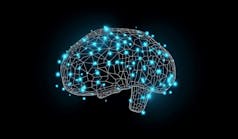TytoCare receives FDA clearance for Rhonchi
TytoCare has received FDA clearance for AI-based detection of all three major abnormal lung sounds. The company announced the completion of its AI-powered lung sound suite with the FDA clearance of Tyto Insights for Rhonchi Detection.
With this latest clearance, TytoCare’s platform now offers comprehensive, AI-driven analysis of the three most clinically significant abnormal lung sounds—wheezes, crackles, and rhonchi—directly within its Home Smart Clinic and Pro Smart Clinic solutions.
By combining smart digital stethoscope technology with AI that identifies key lung sound abnormalities, TytoCare enables providers to deliver faster, more accurate diagnoses, while patients will get timely, high-quality care from the comfort of their homes, reducing unnecessary clinic visits and improving health outcomes through earlier detection and intervention.
Tyto InsightsTM for Lung Sounds is built on TytoCare’s proprietary database of 1.8 million lung sound recordings and leverages machine-learning algorithms trained and validated by pulmonologists. Each component of the suite—wheeze detection (FDA-cleared in 2023), crackle detection (FDA-cleared in 2024), and now rhonchi detection—analyzes lung acoustic signals in real-time and flags potential abnormalities for clinical review. The Rhonchi device was cleared as an Rx device, and for the end user as well.
The performance and accuracy of the Tyto Insights software for detecting wheeze, crackles, and rhonchi were evaluated using retrospective validation datasets sourced from real-world use of the FDA-cleared compatible Tyto Stethoscope.
The algorithm demonstrated strong discriminative ability across all three sound types, as measured by the area under the receiver operating characteristic curve (AUC). The algorithm’s AUC was 95.85%, compared to 79.45% for general practitioners and 83.03% for experts. While multiple performance indicators were assessed, the statistics reported above refer specifically to AUC values—an overall performance measure that evaluates both positive and negative detections and reflects the level of confidence clinicians have in the results.





